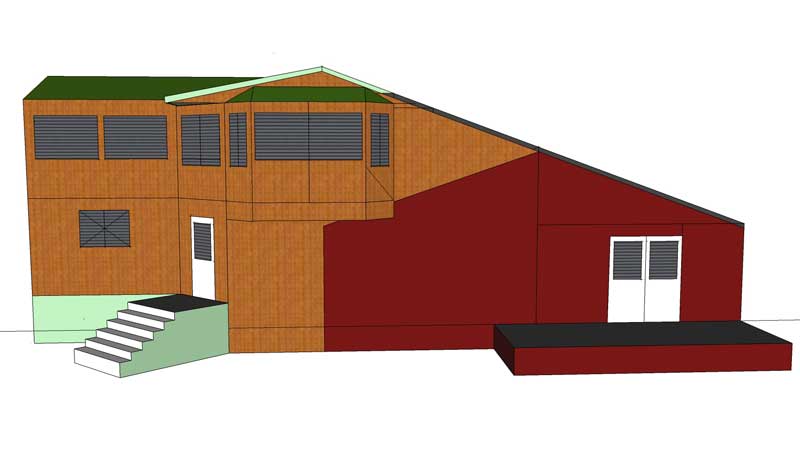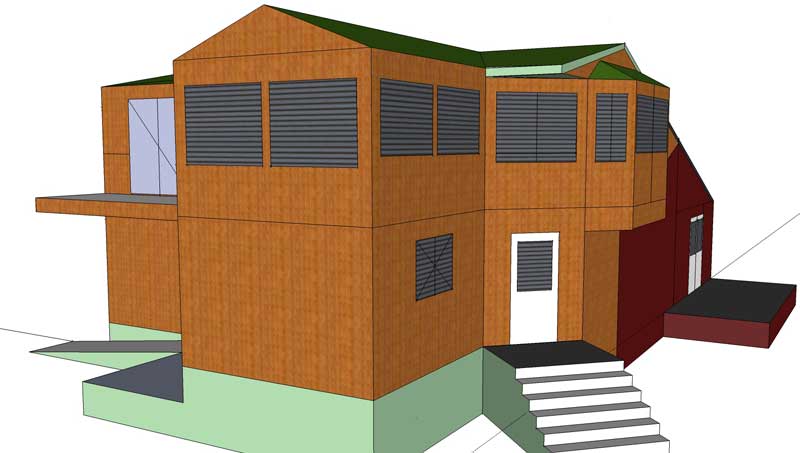In 1974 Alyeska built the roads and the camps that would accommodate 20,000-plus pipeline workers, including me, for the construction of the pipeline in 1975-77. It was the largest privately-financed construction event of the times, eclipsing anything which had ever happened in Alaska prior to that. It had long-term consequences that effected Alaska unlike any other economic event ever.
Yet those times are almost over. Every year the pipeline pushes a decreasing amount of oil. Presently, it is just under 700,000 barrels a day. As it goes by Copper Center, just 100 miles from its destination at Valdez, the oil has already dropped to about 40 degrees inside that pipe. It is getting dangerously and ominously close to the point where it can no longer function. The latest best estimate gives us ten more years. I am far less optimistic. I believe that unless ANWR is brought on line within the next six years, there will not be enough time left to save the pipeline from becoming just another large industrial remnant of better times.
Yes, I too am closely tied to it and always have been. My first real job after leaving the Army in 1974 was working on that pipeline. I knew it was a historic event at the time. I am sorry I did not take pictures while I was there. It was definitely a one-of-a-kind boom where money was practically flowing through the streets of every place even remotely connected with this project all throughout Alaska--just as it must have been during the glory days of the series of gold rushes that mark the early days of Alaska.
In some ways the pipeline will live on after its demise if our legislators are successful in enshrining our Alaskan Permanent Fund into the Constitution. This will guarantee that the investments realized as a result of our early oil revenues will always go first to the Alaskan people. That remains to be seen, but we all want it. All of us, that is, except those too closely associated with government services, that ravenous monster that knows no bounds and recognizes nothing except the justification for an increasingly expensive and ever-growing bureaucracy. Every state faces a similar fate. For some, such as California, New York and Oregon, the chips are coming due with no way to cover the bets. For us here in Alaska, we still have a chance to escape that fate.
But the days of Big Oil are very obviously in decline for Alaska as the companies lay off an ever-increasing number of its workforce on the North Slope. ANWR may be a politically dead issue. Even though we are no where close to running out of oil, politically oil production in Alaska is probably dead. If so, then the writing is on the wall. Yes it is true. It is almost over. My business is closely tied to it, as are most every one else's who operates year-round here in the interior. We Alaskans are only too fully aware that we must plan for what is coming. Most of us are counting heavily on some form of natural gas line to replace it. However, the Trans-Canada Alcan line will likely never come to be. That is because Alaskan natural gas must compete with huge fields of cheaper gas in Canada and Stateside. No way. We can't do it. Only an all-Alaska line has much of a chance of becoming reality, especially if we gain an export license so we can sell LPG to the Orient. That is where I am placing my bets, at least for now.
Ten years. Maybe more. Probably less. That's it. That's all there is.
Addenda: Since I wrote this brief piece last year (as part of a larger thread related to pipeline construction camps) I have begun to have serious doubts that we will be building any gas pipeline. I am quite sure that the trans-Canada one is out the window, but I also see little encouraging about the Valdez line, although I remain hopeful. It is all a function of how price-competetive Alaska can be with its LNG gas, assuming it is ever delivered to Valdez.
Alyeska Pipeline Map: click image for larger version




































